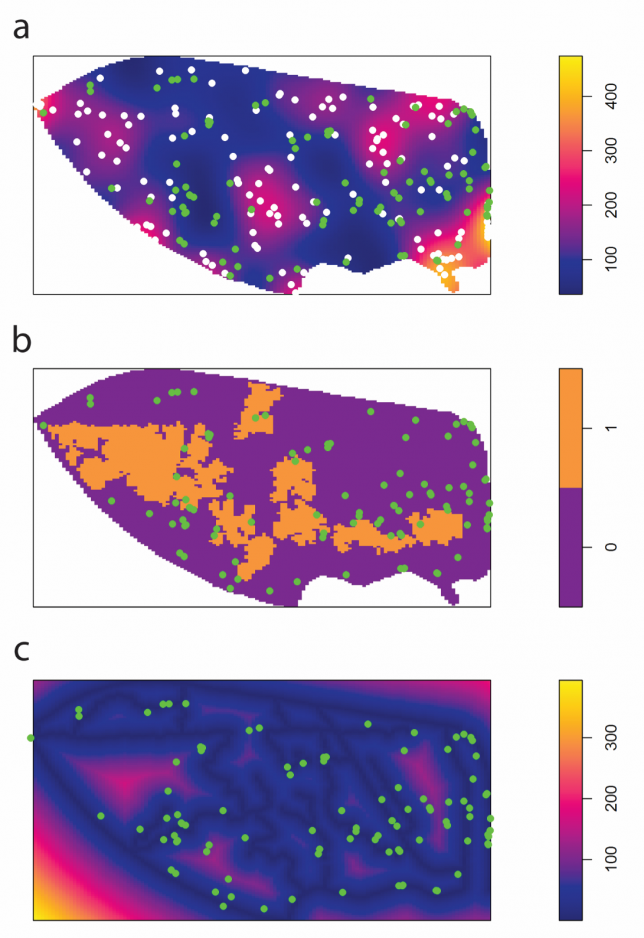This is the website/blog for the Anderson Laboratory at Valdosta State University.
- We study the geographic, ecological, and microevolutionary processes that drive the spatial distribution of genes, individuals, and species.
- Many of the projects we work on address fundamental questions in ecology and microevolution, and have important implications for conservation and species management.
- Our primary domain is the natural sciences but we approach many problems with a toolkit from statistical geography and geostatistics.
- Point pattern analysis has been a hot topic in the lab; many current projects in the lab involve correcting for inhomogeneity in tests of dispersion and co-dispersion of point processes.
- Our methodological approach is integrative: many of our projects involve field work, genetic marker analysis, and computational biology.
- There is a strong emphasis in the lab on statistical programming (in R and Python). Many of the analyses we conduct require customized data pipelines and functions.
Explore the tabs for lab NEWS and other topics, such as the great PEOPLE (past and present) that have worked in the Anderson Lab.
Find out more about the regionally relevant RESEARCH that we are doing.
If you are feeling aggressive, nerd out with our blog on point pattern analysis in R.

Surfaces used as predictors of the intensity of a plant (cocoplum): (a) kernel smoothed intensity surface (in points per kilometer) for gopher tortoise burrows (white dots), (b) areas inside (= 1; orange) and outside (= 0; purple) of saw palmetto patches, and (c) distance (in meters) from gopher tortoise movement trails. The locations of cocoplum bushes (green dots) are superimposed on each surface. (From Hanish et al. 2020)
